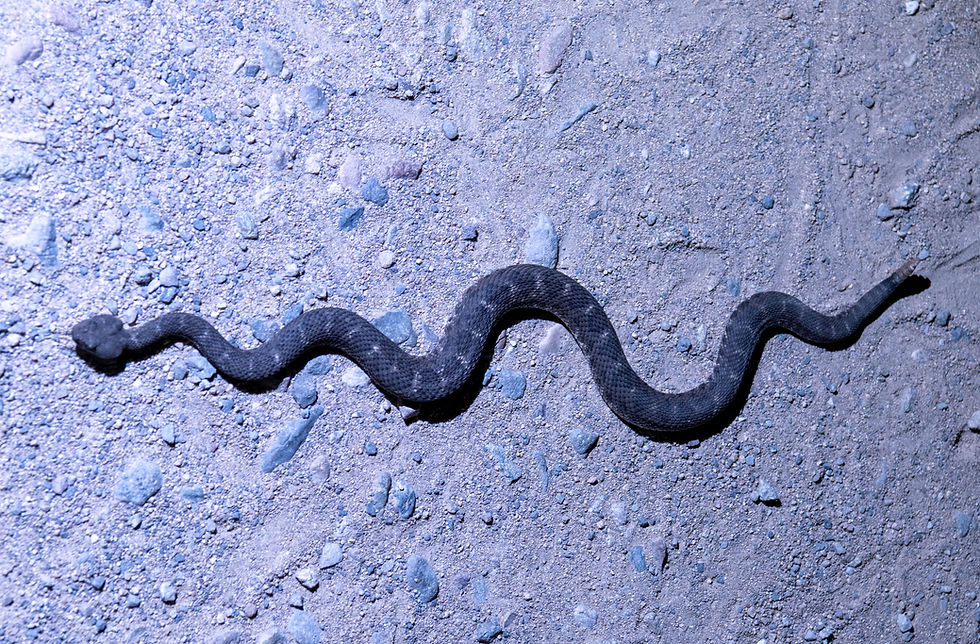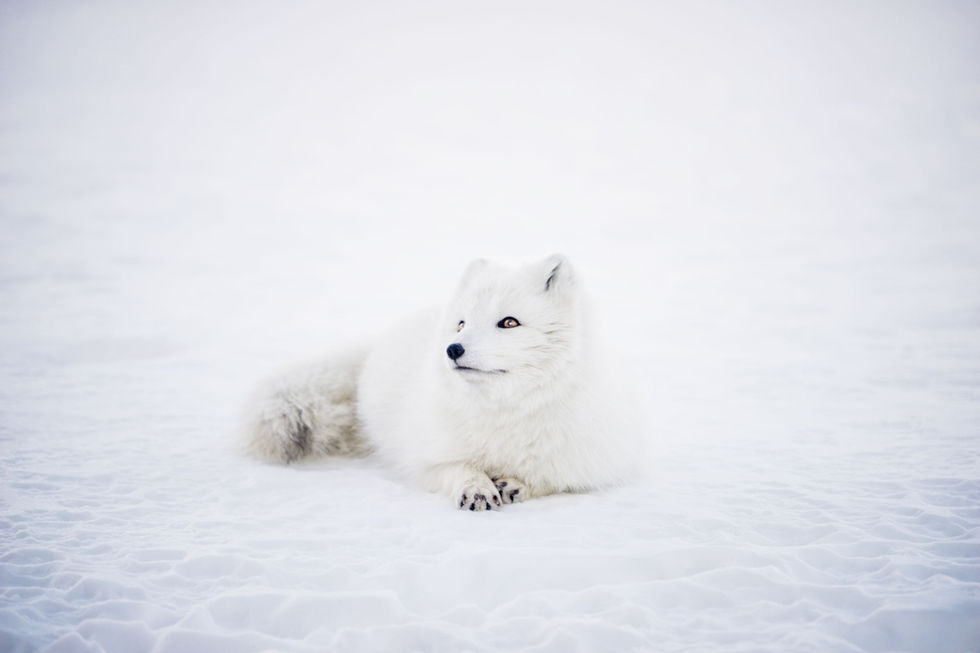Milksnake
Lampropeltis triangulum

The North American Milksnake is a medium-sized, nonvenomous colubrid, reaching lengths of up to approximately 900 mm (35.5 inches). It is instantly recognizable by its vivid pattern of alternating red, black, and white or yellowish bands encircling its body. The black bands separate the red from the lighter-colored bands and often broaden at the midline of the back, sometimes completely bridging the red bands. The snout is black and may be flecked with red or white. A distinct light band crosses the back of the head and neck. The belly coloration varies among individuals, often showing partial continuation of the dorsal pattern or appearing mostly white or mottled. Its smooth, shiny scales are typically arranged in 19 or 21 rows at midbody, with mostly divided subcaudal scales and a single anal scale. This coloration pattern is thought to be an example of Batesian mimicry, offering protection by resembling the venomous Coral Snake.

The Milksnake boasts one of the broadest ranges of any North American snake, extending from southeastern Canada through much of the United States and into Central America as far south as Ecuador. In the western United States, populations are known from northeastern and southeastern Arizona, including areas such as the Little Colorado River drainage and regions near Holbrook, St. Johns, and Petrified Forest National Park. It has also been recorded in parts of Utah and Montana. The species is typically found from near sea level up to elevations of about 9,000 feet (2,740 meters), although in Arizona it is most often encountered between 4,200 and 6,200 feet.

The Milksnake boasts one of the broadest ranges of any North American snake, extending from southeastern Canada through much of the United States and into Central America as far south as Ecuador. In the western United States, populations are known from northeastern and southeastern Arizona, including areas such as the Little Colorado River drainage and regions near Holbrook, St. Johns, and Petrified Forest National Park. It has also been recorded in parts of Utah and Montana. The species is typically found from near sea level up to elevations of about 9,000 feet (2,740 meters), although in Arizona it is most often encountered between 4,200 and 6,200 feet. The Milksnake inhabits a diverse range of environments, favoring grassland and semi-desert regions. Common habitats include Plains and Great Basin Grassland, sagebrush flats, piñon-juniper woodlands, and open pine forests. It is also found in canyons with oak and maple growth, rocky slopes, river valleys, sand dunes, farmland, and even the outskirts of suburban developments. This adaptability to varied landscapes contributes to its broad geographic range. Primarily nocturnal and highly secretive, the Milksnake is rarely observed in the open. It spends much of its life underground, sheltering in rodent burrows, beneath logs, rocks, and debris. During colder months, it enters hibernation beneath the frost line. While elusive, it may be locally common in suitable habitats. Its secretive lifestyle and cryptic coloring allow it to avoid detection by both predators and human observers. An opportunistic feeder, the North American Milksnake preys on a wide array of animals. Its diet includes lizards, snakes (including other species of its own genus), reptile eggs, small mammals such as mice, birds and their eggs, amphibians, and occasionally invertebrates like insects and earthworms. It is often found in rural or agricultural areas such as barns, where it hunts rodents, contributing to the mistaken belief that it "milks" cows—an origin for its common name. Milksnakes breed in the spring following emergence from hibernation. Females typically lay a clutch of 2 to 24 eggs during the summer, with hatchlings emerging in late summer to early fall. Although smaller clutches are more common in western populations, especially Arizona, larger clutch sizes have occasionally been documented, including rare reports of up to 36 eggs. The North American Milksnake is protected in certain jurisdictions such as Cochise County, Arizona, where it is illegal to collect, harm, or harass the species. Despite being widespread and adaptable, their secretive habits and potential for habitat-specific rarity underscore the importance of local protections and continued field surveys to fully understand their distribution and conservation needs.
References:
Stebbins, R. C., & McGinnis, S. M. (2018). Peterson Field Guide to Western Reptiles and Amphibians (4th ed.). Houghton Mifflin Harcourt.
Brennan, T. C. (n.d.-e). Western Rattlesnake. The Reptiles and Amphibians of Arizona. https://reptilesofaz.org/snakes-subpages/h-c-cerberus/
Brennan, T. C., & Holycross, A. T. (2006). A field guide to Amphibians and reptiles in Arizona (2nd ed.). Arizona Game and Fish Dept.













